Lemon Chiffon Cake: Just the name conjures images of sunshine and delicate sweetness, doesn’t it? I’m thrilled to share this recipe with you, because this cake isn’t just delicious; it’s a slice of baking history! Imagine a cake so light, so airy, it practically floats off your plate. That’s the magic of chiffon.
The chiffon cake, a relatively modern invention compared to other classic cakes, was created in 1927 by Harry Baker, a California insurance salesman turned baker. He kept his recipe a closely guarded secret for years, baking for Hollywood’s elite before finally selling it to General Mills. Its unique texture comes from the addition of vegetable oil and whipped egg whites, a technique that revolutionized cake baking.
What makes a lemon chiffon cake so irresistible? It’s the perfect balance of flavors and textures. The bright, zesty lemon perfectly complements the cake’s ethereal crumb. People adore it because it’s not overly sweet, making it a delightful treat any time of day. Plus, its light texture means you can indulge without feeling weighed down. Whether you’re serving it at a sophisticated brunch or enjoying a quiet afternoon tea, this cake is guaranteed to impress. So, let’s get baking and create a truly unforgettable dessert!
Ingredients:
- For the Cake:
- 2 1/4 cups (281g) cake flour, sifted
- 1 1/2 cups (300g) granulated sugar, divided
- 1 tablespoon baking powder
- 1 teaspoon salt
- 1/2 cup (120ml) vegetable oil
- 7 large egg yolks
- 3/4 cup (180ml) cold water
- 1/4 cup (60ml) lemon juice, freshly squeezed
- 1 tablespoon lemon zest, finely grated
- 8 large egg whites
- 1/2 teaspoon cream of tartar
- For the Lemon Glaze (Optional):
- 1 cup (120g) powdered sugar
- 2-3 tablespoons lemon juice, freshly squeezed
- 1 teaspoon lemon zest, finely grated (optional)
Preparing the Batter:
- Sift the Dry Ingredients: In a large bowl, sift together the cake flour, 1 cup of the granulated sugar, baking powder, and salt. Sifting is crucial for a light and airy chiffon cake, so don’t skip this step! I usually sift twice to be extra sure.
- Combine Wet Ingredients (Yolks): In a separate bowl, whisk together the vegetable oil, egg yolks, cold water, lemon juice, and lemon zest. Make sure the yolks are well combined with the other liquids. This mixture will add richness and flavor to our cake.
- Combine Wet and Dry Ingredients: Gradually add the wet ingredients to the dry ingredients, whisking until just combined. Be careful not to overmix at this stage. Overmixing can develop the gluten in the flour, resulting in a tougher cake. A few lumps are okay!
Preparing the Meringue:
- Whip the Egg Whites: In a clean, grease-free bowl (this is very important!), beat the egg whites with an electric mixer until foamy. Add the cream of tartar and continue beating until soft peaks form. Cream of tartar helps stabilize the egg whites and prevents them from collapsing.
- Gradually Add Sugar: Gradually add the remaining 1/2 cup of granulated sugar, beating until stiff, glossy peaks form. The meringue should be firm enough to hold its shape but not dry. Be careful not to overwhip the egg whites, as this can make them grainy.
Combining the Batter and Meringue:
- Fold in the Meringue (Part 1): Gently fold about one-third of the meringue into the yolk mixture. This will lighten the batter and make it easier to incorporate the remaining meringue. Use a large rubber spatula and a light hand to avoid deflating the egg whites.
- Fold in the Meringue (Part 2): Gently fold in the remaining meringue in two additions, being careful not to overmix. The batter should be light and airy. It’s better to have a few streaks of meringue than to overmix the batter.
Baking the Cake:
- Prepare the Pan: Pour the batter into an ungreased 10-inch tube pan (angel food cake pan). Do not grease the pan! The cake needs to cling to the sides of the pan as it rises. If you grease the pan, the cake will slide down and won’t rise properly.
- Bake: Bake in a preheated oven at 325°F (163°C) for 50-60 minutes, or until a wooden skewer inserted into the center comes out clean. The cake should be golden brown and spring back lightly when touched.
- Invert the Pan: Immediately invert the pan onto a wire rack. This is crucial for preventing the cake from collapsing. Let the cake cool completely upside down in the pan for at least 1 hour, or preferably longer. I usually let it cool for 2-3 hours to be absolutely sure.
Releasing the Cake:
- Loosen the Cake: Once the cake is completely cool, run a thin knife or offset spatula around the edges of the pan to loosen the cake.
- Remove the Cake: Gently push the cake up from the bottom of the pan. If your pan has a removable bottom, you can simply push it up. If not, you may need to invert the cake onto a plate and then invert it again onto a serving platter.
Making the Lemon Glaze (Optional):
- Whisk the Glaze: In a small bowl, whisk together the powdered sugar, lemon juice, and lemon zest (if using) until smooth. Add more lemon juice if needed to reach your desired consistency. The glaze should be thick enough to coat the cake but thin enough to drizzle.
- Glaze the Cake: Drizzle the lemon glaze over the top of the cake. You can also pour the glaze over the entire cake for a more even coating.
Serving and Storing:
- Serve: Slice the cake with a serrated knife and serve. Lemon chiffon cake is delicious on its own, but you can also serve it with fresh berries, whipped cream, or a scoop of ice cream.
- Store: Store leftover cake in an airtight container at room temperature for up to 3 days. You can also freeze the cake for longer storage. Wrap the cake tightly in plastic wrap and then in aluminum foil before freezing.
Tips for Success:
- Use Cake Flour: Cake flour has a lower protein content than all-purpose flour, which results in a more tender and delicate cake.
- Sift the Flour: Sifting the flour helps to aerate it and remove any lumps, resulting in a lighter cake.
- Don’t Overmix: Overmixing the batter can develop the gluten in the flour, resulting in a tougher cake.
- Use a Clean Bowl for the Meringue: Any trace of grease or egg yolk in the bowl can prevent the egg whites from whipping properly.
- Don’t Grease the Pan: The cake needs to cling to the sides of the pan as it rises. If you grease the pan, the cake will slide down and won’t rise properly.
- Cool the Cake Upside Down: Cooling the cake upside down prevents it from collapsing.
- Fresh Lemon Juice and Zest: Using fresh lemon juice and zest will give the cake the best flavor.
- Room Temperature Eggs: While the recipe calls for cold water, using room temperature eggs can help the batter come together more smoothly. Separate the eggs while they are cold, then let the whites sit at room temperature for about 30 minutes before whipping.
- Adjust Baking Time: Ovens vary, so adjust the baking time as needed. The cake is done when a wooden skewer inserted into the center comes out clean.
- High Altitude Adjustments: If you live at a high altitude, you may need to adjust the recipe slightly. Try reducing the sugar by 1 tablespoon and increasing the liquid by 1 tablespoon. You may also need to increase the baking temperature by 25 degrees Fahrenheit.
Troubleshooting:
- Cake Collapsed: This could be due to several factors, including not cooling the cake upside down, overmixing the batter, or not whipping the egg whites to stiff peaks.
- Cake is Dense: This could be due to overmixing the batter, not sifting the flour, or not using cake flour.
- Cake is Dry: This could be due to overbaking the cake or not using enough liquid.
- Cake is Sticky: This could be due to underbaking the cake or storing it in a humid environment.
Variations:
- Orange Chiffon Cake: Substitute orange juice and zest for the lemon juice and zest.
- Lime Chiffon Cake: Substitute lime juice and zest for the lemon juice and zest.
- Chocolate Chiffon Cake: Add 1/4 cup of unsweetened cocoa powder to the dry ingredients.
- Coffee Chiffon Cake: Add 2 tablespoons of instant coffee granules to the wet ingredients.
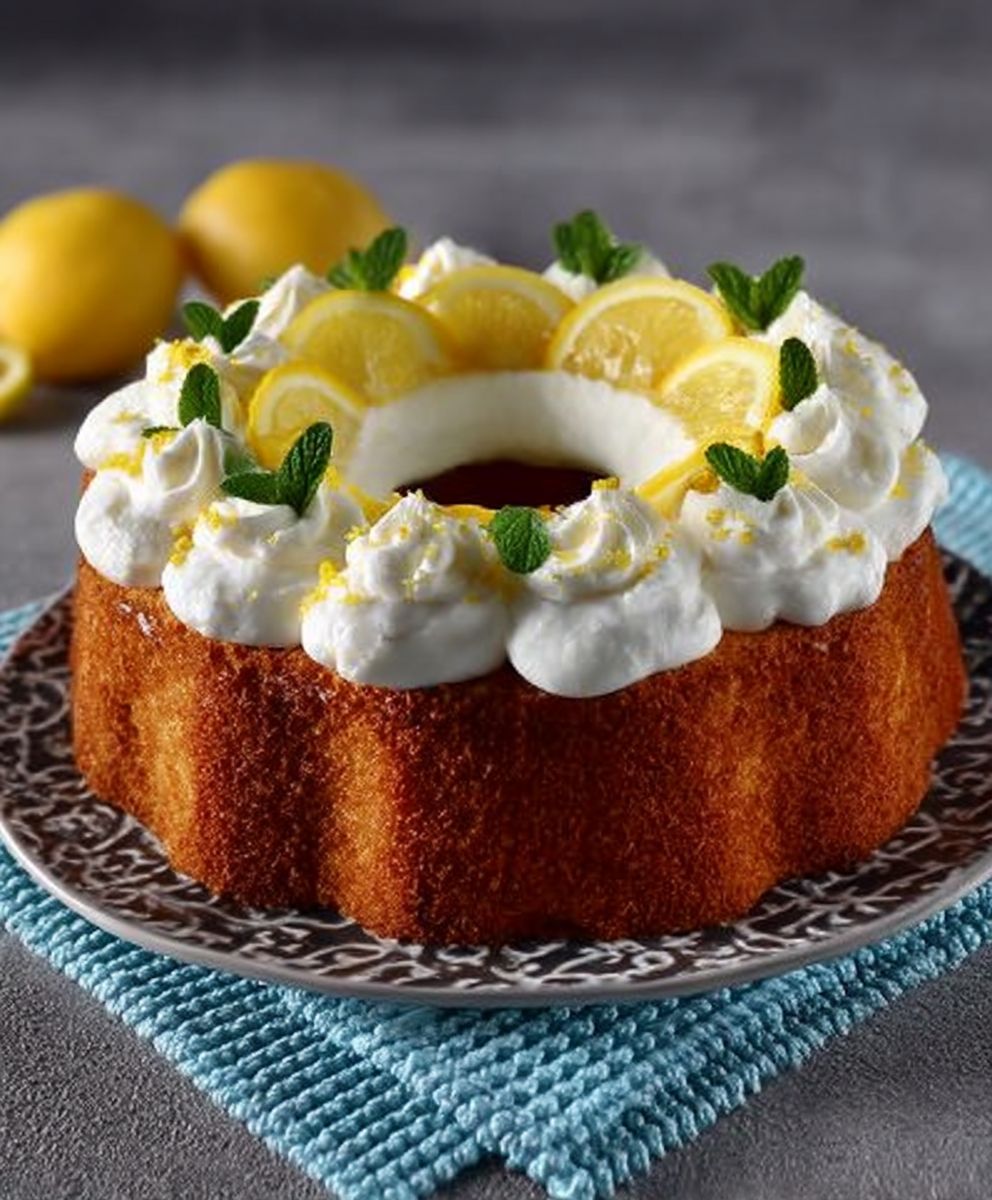
Conclusion:
This Lemon Chiffon Cake isn’t just a dessert; it’s an experience. From the moment you whisk the batter to the final, triumphant slice, you’re embarking on a culinary adventure that culminates in a cloud of citrusy perfection. I truly believe this recipe is a must-try for anyone who appreciates a light, airy, and intensely flavorful cake. The delicate crumb, the bright lemon zest, and the melt-in-your-mouth texture combine to create a symphony of sensations that will leave you wanting more.
But why is it a must-try? Because it’s more than just a cake; it’s a showstopper. Imagine presenting this beauty at your next gathering the oohs and aahs will be well worth the effort. It’s also surprisingly versatile. While it’s divine on its own, a simple dusting of powdered sugar elevates it to elegant simplicity. Or, for a more decadent treat, try serving it with a dollop of freshly whipped cream and a scattering of berries.
Serving Suggestions and Variations:
Don’t be afraid to get creative! This Lemon Chiffon Cake is a blank canvas for your culinary imagination. Here are a few ideas to get you started:
* Lemon Curd Topping: Spread a generous layer of homemade or store-bought lemon curd over the top for an extra burst of citrusy goodness.
* Berry Compote: A warm berry compote, made with raspberries, blueberries, or strawberries, adds a touch of sweetness and tartness that complements the lemon perfectly.
* Citrus Glaze: Create a simple glaze by whisking together powdered sugar and lemon juice (or orange juice for a different twist) and drizzle it over the cooled cake.
* Chocolate Drizzle: For a surprising and delightful combination, drizzle melted white chocolate or dark chocolate over the cake. The bitterness of the chocolate balances the sweetness and acidity of the lemon.
* Individual Chiffon Cakes: Bake the batter in muffin tins for individual chiffon cakes, perfect for parties or portion control.
* Layer Cake: Double the recipe and bake in two round cake pans to create a stunning lemon chiffon layer cake with your favorite frosting. A cream cheese frosting would be particularly delicious!
* Poppy Seed Variation: Add a tablespoon or two of poppy seeds to the batter for a subtle nutty flavor and visual appeal.
* Orange Chiffon Cake: Substitute orange zest and juice for the lemon for a delightful orange-flavored variation.
I’ve poured my heart into perfecting this recipe, and I’m confident that you’ll love it as much as I do. The key to success is patience and precision. Follow the instructions carefully, especially when it comes to whipping the egg whites. A stiff peak is essential for achieving that signature chiffon cake lightness.
So, what are you waiting for? Gather your ingredients, preheat your oven, and prepare to be amazed. I promise you, the aroma of this Lemon Chiffon Cake baking in your kitchen will fill your home with warmth and happiness.
I can’t wait to hear about your experience! Please, try this recipe and share your photos and comments. Let me know what variations you tried and how they turned out. Did you add a special topping? Did you bake it for a special occasion? Your feedback is invaluable, and it helps me continue to improve and share delicious recipes with the world. Happy baking!
Lemon Chiffon Cake: The Ultimate Guide to Baking Perfection
Light and airy Lemon Chiffon Cake with bright lemon flavor, perfect for any occasion. Optionally topped with tangy lemon glaze.
Ingredients
- 2 1/4 cups (281g) cake flour, sifted
- 1 1/2 cups (300g) granulated sugar, divided
- 1 tablespoon baking powder
- 1 teaspoon salt
- 1/2 cup (120ml) vegetable oil
- 7 large egg yolks
- 3/4 cup (180ml) cold water
- 1/4 cup (60ml) lemon juice, freshly squeezed
- 1 tablespoon lemon zest, finely grated
- 8 large egg whites
- 1/2 teaspoon cream of tartar
- 1 cup (120g) powdered sugar
- 2-3 tablespoons lemon juice, freshly squeezed
- 1 teaspoon lemon zest, finely grated (optional)
Instructions
- Sift the Dry Ingredients: In a large bowl, sift together the cake flour, 1 cup of the granulated sugar, baking powder, and salt.
- Combine Wet Ingredients (Yolks): In a separate bowl, whisk together the vegetable oil, egg yolks, cold water, lemon juice, and lemon zest.
- Combine Wet and Dry Ingredients: Gradually add the wet ingredients to the dry ingredients, whisking until just combined. Be careful not to overmix.
- Whip the Egg Whites: In a clean, grease-free bowl, beat the egg whites with an electric mixer until foamy. Add the cream of tartar and continue beating until soft peaks form.
- Gradually Add Sugar: Gradually add the remaining 1/2 cup of granulated sugar, beating until stiff, glossy peaks form.
- Fold in the Meringue (Part 1): Gently fold about one-third of the meringue into the yolk mixture.
- Fold in the Meringue (Part 2): Gently fold in the remaining meringue in two additions, being careful not to overmix.
- Prepare the Pan: Pour the batter into an ungreased 10-inch tube pan (angel food cake pan). Do not grease the pan!
- Bake: Bake in a preheated oven at 325°F (163°C) for 50-60 minutes, or until a wooden skewer inserted into the center comes out clean.
- Invert the Pan: Immediately invert the pan onto a wire rack. Let the cake cool completely upside down in the pan for at least 1 hour, or preferably longer.
- Loosen the Cake: Once the cake is completely cool, run a thin knife or offset spatula around the edges of the pan to loosen the cake.
- Remove the Cake: Gently push the cake up from the bottom of the pan.
- Whisk the Glaze (Optional): In a small bowl, whisk together the powdered sugar, lemon juice, and lemon zest (if using) until smooth. Add more lemon juice if needed to reach your desired consistency.
- Glaze the Cake (Optional): Drizzle the lemon glaze over the top of the cake.
- Serve: Slice the cake with a serrated knife and serve.
- Store: Store leftover cake in an airtight container at room temperature for up to 3 days. You can also freeze the cake for longer storage.
Notes
- Sifting the flour is crucial for a light and airy chiffon cake.
- Use a clean, grease-free bowl for whipping the egg whites.
- Do not grease the tube pan.
- Cool the cake upside down to prevent collapsing.
- Fresh lemon juice and zest will give the best flavor.
- See the original text for additional tips, troubleshooting, and variations.

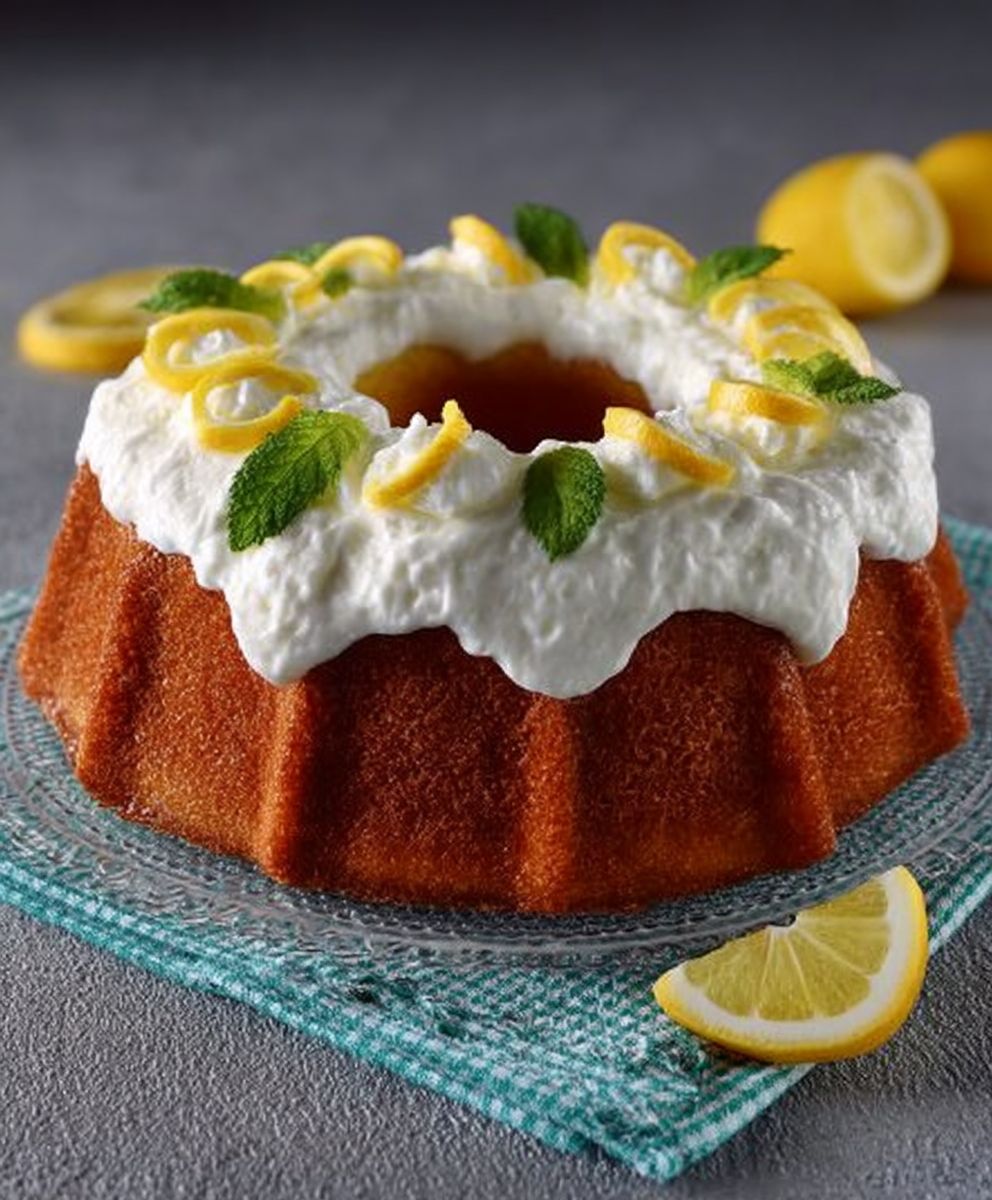
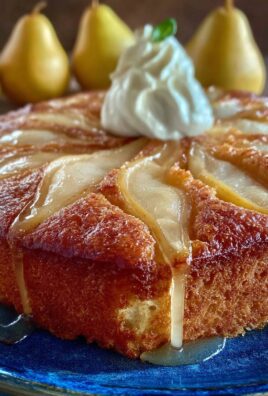
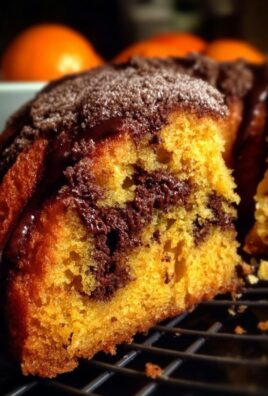
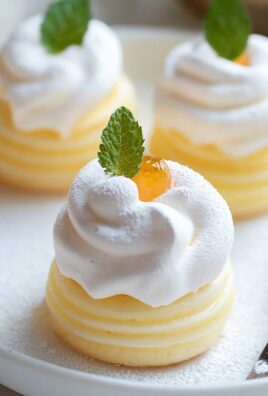
Leave a Comment